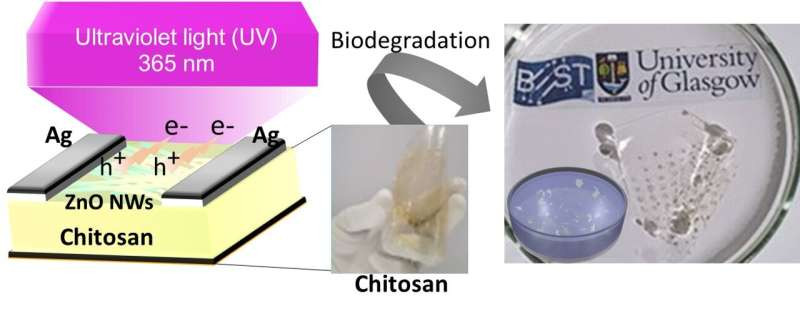Researchers develop disposable wearable UV sensor
27-10-2022 | By Robin Mitchell
UV exposure is dangerous to human health due to the cancer risk it carries which is why wearing sun cream and keeping out of extreme sunlight is important. Recognising the difficulties in detecting UV exposure, researchers recently developed a wearable UV sensor that is washable and safe to use in clothing. What challenges does UV exposure present, what did the researchers develop, and how does this demonstrate the potential of wearable devices?
What challenges does UV exposure present?
As much as we love to bask in the sun and get our tan on, UV light is one of the major causes for skin cancer in society. It is currently estimated that there are around 16,000 new cases of skin cancer each year in the UK, of which 2,300 die giving a survival rate of 87%.
But of all skin cancer cases, it is believed that around 86% are preventable as over 90% of all skin cancer cases are suspected of being caused by overexposure to UV light. But it’s not just natural UV light that is dangerous to humans, any form of UV is dangerous which includes tanning beds, welders, and exposure units. This is why there have been growing calls to ban tanning studios that use high-powered UV tubes to help build tans.
Of course, putting on sun cream is one solution to reducing the effects of UV damage, and avoiding sunlight during peak hours can also help, but these solutions aren’t always easy to apply due to how UV exposure works.
It is widely believed that UV exposure is most dangerous around the summertime when it gets very hot, but while the UV index is higher during summer, sunburn can occur at any time of the year (including winter). In fact, UV exposure can be worsened during winter after a snowfall and clear skies where sunlight is reflected off the ground and onto the skin.
Furthermore, it is also commonly believed that heat is related to UV index such that a hot day will see burning, but again, this is not true. Hot days can actually help remind people to seek shelter, but days, where the temperature is comfortable, are the ones that are the most dangerous as it is very easy to spend many hours in the sun unprotected. Simply put, it is impossible to tell what the current UV levels are without some kind of sensor.
Finally, signs of UV damage only happen after the fact, and this makes it very difficult to identify the extent of damage from sunburn. This means that serious sunburns go unnoticed until many hours have passed.
Researchers develop wearable degradable UV sensor
Recently, researchers from the University of Glasgow have recognised the dangers faced by UV exposure and have developed a wearable UV sensor that is fully degradable and able to warn users of high levels of exposure.
The sensor is made from Zinc Oxide (ZnO) nanowires that are highly sensitive to UV exposure that is integrated into a flexible substrate. To help ensure the biodegradability of the sensor, the researchers chose to use Chitosan which is a sugar derived from the outer skeleton of shellfish. Furthermore, the selection of ZnO as the active element and Chitosan as the substrate also allows the sensor to be integrated into clothing and dissolve away during a wash cycle.
Additionally, the sensor developed by the researchers also exhibited flexibility which allows it to be printed over non-planar surfaces such as skin and clothing. Finally, the ability to dispose of the sensor in an environmentally safe way gives the device a significant advantage over other disposable UV detectors currently on the market that generate harmful waste.

How does this demonstrate the power of wearable devices?
Keeping the human body healthy requires active monitoring of the environment to identify potential sources of harm. In the case of UV exposure, using a wearable device to measure the strength of UV light can instantly provide valuable knowledge on whether sun cream and other protective measures are required. Taking precautionary steps with such information can then reduce the chance of skin cancer later in life, and therefore improve the overall quality of life. Additionally, preventing such conditions via basic steps also saves public health services numerous amounts of money as treatments for cancer is often expensive
But it’s not just UV exposure that could help with; environmental sensing could help protect against the harmful effects of air pollution. Just like UV exposure, it is not always clear if the air we are breathing is contaminated or not, but if dangerous levels of emissions are detected, simple measures can be taken to mitigate against potential long-term conditions such as cancer and asthma.
Wearable electronics are still in their infancy, but once established, they will provide unimaginable amounts of benefit to everyday life. Furthermore, wearable devices might even be able to help reduce the cost of medical care by leveraging predictive AI in diagnosis and catching conditions well before they become problematic.

